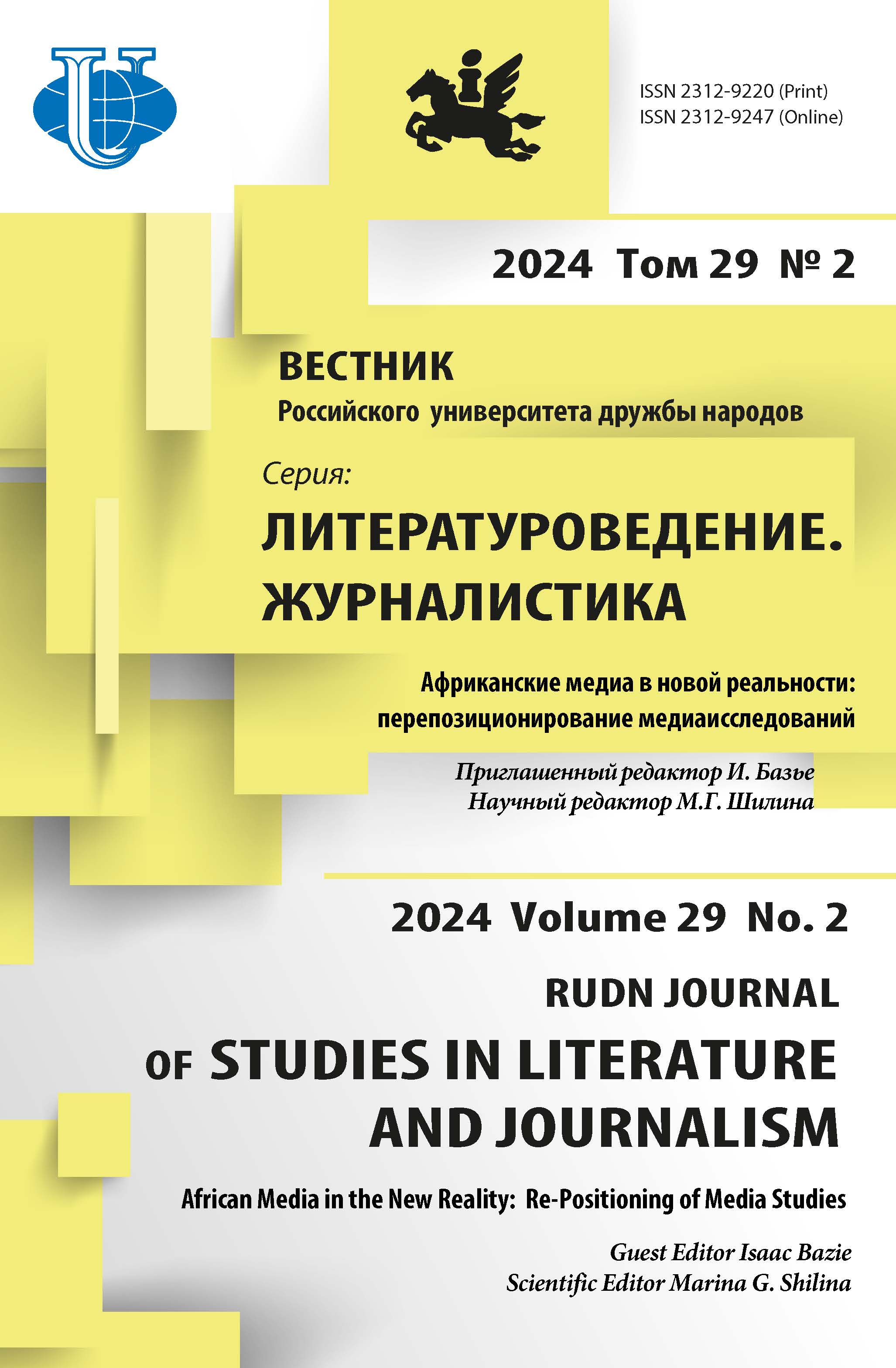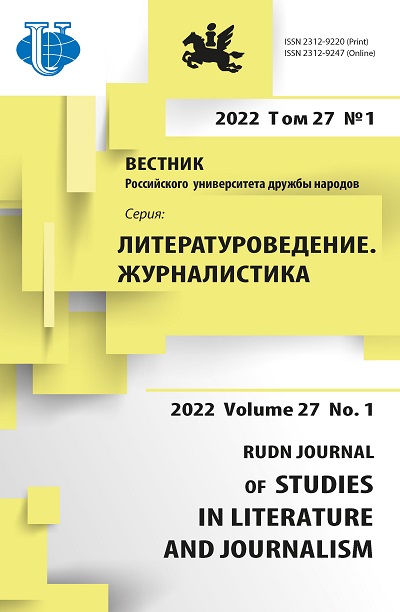Interpretation of the poem by A.A. Akhmatova Muse
- Authors: Aksenova A.A.1
-
Affiliations:
- Kemerovo State University
- Issue: Vol 27, No 1 (2022)
- Pages: 30-38
- Section: LITERARY CRITICISM
- URL: https://journals.rudn.ru/literary-criticism/article/view/30718
- DOI: https://doi.org/10.22363/2312-9220-2022-27-1-30-38
Cite item
Full Text
Abstract
The meaning of the mysterious dialogue between the poet and the Muse in the final part of the poem is revealed in the process of consistent reading. It should be noted that in the human and natural world, the separation of darkness and light, sleep and wakefulness, idle life and devotion, is reflected in the poet’s preference for his Muse to earthly honors, youth and independence. This brings together two poets from different historical epochs in the finale of the poem: the poet who lives now, like the Renaissance poet, continues to serve the Muse. The Muse in this poem has a human-like appearance, body, voice and look. This visual detail of the image of the Muse is important for the poetic persona and the reader because it transforms something important and sublime into an intimate, personal dimension. The personal communication plane is marked by the stylistic opposition of “laurels” and “dear”. Her attribute (αὐλός) corresponds more to Pan than to Apollo-citharoedus. Therefore, the natural state of the world here is not hostile, but representative of human life. In the course of the study, it turns out that the reference to the Divine Comedy is supported not only by the obvious mention of Dante in the finale, but also in the very first stanza.
About the authors
Anastasia A. Aksenova
Kemerovo State University
Author for correspondence.
Email: AA9515890227@yandex.ru
ORCID iD: 0000-0001-5048-6019
Lecturer of the Department of Russian language and literature
6 Krasnaya St, Kemerovo, 650000, Russian FederationReferences
- Ahmatova, A.А. (1998). Collected Works. Poems. 1904–1941. (Vol. 1). Moscow: Jellis Lak. publ. (In Russ.)
- Dante Alig’eri. (1967). The Divine Comedy. Moscow: Nauka publ. (In Russ.)
- Hlodovskij, R.I. (1992). Anna Akhmatova and Dante. Secrets of Craft. Akhmatova Readings (Vol. 2, pp. 75–92). (In Russ.)
- Kazarin, V.P., Novikova, M.A. (2014). Akhmatova. Dante. Crimea. (To the Formulation of the Problem). Questions of Russian Literature, 29(86), 5–22. (In Russ.)
- Kihnej, L.G. (2014). The Functions of Shakespeare’s and Dante’s Motifs in the Poetry of Anna Akhmatova. Russian Literature: Historical and Literary Journal, (2), 156–176. (In Russ.).
- Losev, A.F. (1957). Ancient Mythology in its Historical Development. Moscow: Gosudarstvennoe uchebno-pedagogicheskoe izdatel’stvo Ministerstva prosveshhenija RSFSR (Uchpedgiz) publ. (In Russ.)
- Merkel’, E.V. (2016). Anthropomorphic Images of Creativity in the Poetry of Anna Akhmatova. Pushkin Readings-2016. Artistic Strategies of Classical and New Literature: Genre, Author, Text: Materials of the XXI International Scientific Conference (pp. 162–168). Saint-Petersburg: LGU im. A. S. Pushkina publ. (In Russian).
- Mirza, M.N. (2019). “Secrets of craft” by A.A. Akhmatova: Creativity-nature-muse. Bulletin of the Student Scientific Society of the State Educational Institution of Higher Education “Donetsk National University”, 2(11), 57–61. (In Russian).
- Tjupa, V.I. (2001). Art Analytics: An Introduction to Literary Analysis. Moscow: Labirint publ. (In Russ.)
- Wang, M. (2020). The Image of Muse in the Poems “Muse” of A.S. Pushkin, A.A. Akhmatova and M.S. Petrovykh. RUDN Journal of Studies in Literature and Journalism, 25(2), 287–294. (In Russ.).
















